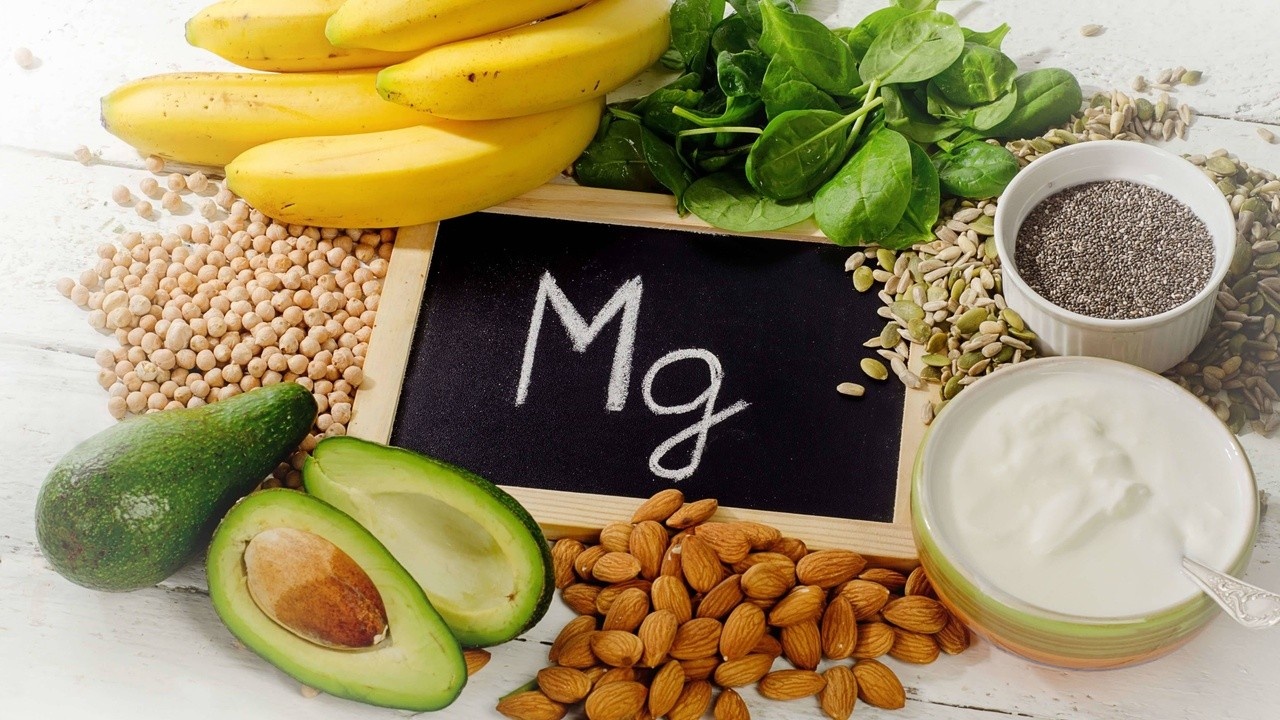There is so much to brag about Mag

Tightness, tension, spasm throughout the body. These symptoms are often a sign of insufficient magnesium. Magnesium functions as a “master” electrolyte in this case because it directly controls the pump that allows potassium to flow into the cell (where benefits can actually be experienced).
Magnesium is a relatively safe supplement to explore but should be done cautiously in those with any degree of kidney dysfunction or disease and always in active partnership with the attending physician for the kidney ailments.
Known as the calming mineral because it helps relax muscles and nerves, magnesium is essential for your good health. It’s a cofactor in over 300 enzymatic reactions in your body and plays a role in many functions including:
- building & strengthening bones and teeth
- improving blood circulation
- metabolism of carbohydrates, proteins and fats
- protection against inflammation and cardiovascular disease
- reducing PMS symptoms
- relaxing muscles and nerves
- helping you fall and stay asleep
- improving elimination and reducing constipation
Magnesium deficiency is quite rampant in our culture due to the standard American diet coupled with a decreasing concentration of minerals in our soil from farming practices. It’s estimated that 60% of the U.S. population is at risk for magnesium deficiency.
Extreme deficiencies are most common in alcoholics, diabetics, and people with poor dietary intake or digestive problems that inhibit absorption. Consuming diuretics (certain medications, caffeine, and alcohol), antibiotics, or oral contraceptives may also lower blood magnesium. Stress is also known to deplete magnesium. Additionally, magnesium deficiency is common in those with fibromyalgia and other pain syndromes.
It’s for these reasons that I suggest clients check their magnesium level. It’s important to request “RBC magnesium” specifically to be sure that the (standard default) “serum magnesium” is not measured instead. Red Blood Cell (RBC) mineral levels are not a perfect measure, but they do offer a more accurate reflection both of ongoing intake in the typical diet (2-3 months in RBCs vs. feedback on only a day or two in the serum level) and also one’s cellular absorption of the nutrient. It’s not enough to get nutrients into the bloodstream; we need to be able to absorb them well into our cells in order to make a difference in our functioning.
Magnesium, in particular, is critical to get into the cell as that is where it has the most beneficial effects. We want approximately 98% of our magnesium inside of our cells. The functional or "optimal" RBC Magnesium level is between 6- 6.5 mg/dL.
There are many different forms of magnesium available on the market. I recommend my clients avoid 100% the carbonate form, as it is poorly absorbed at the typical pH of human digestive processes (but it’s a cheap form and thus commonly available!). The following is what I suggest instead, depending on your symptoms:
For constipation, I recommend magnesium citrate. Start with 300-400mg taken with dinner to help with early AM bowel movement the next day. It may take a few days to build up full efficacy. Both capsule and loose powder options are available.
For muscular spasm, tension, tightness, including headache, I recommend magnesium glycinate or malate. These chelated forms of magnesium typically do not affect the GI tract much and won’t overly-stimulate an already-healthy bowel movement habit. Magnesium glycinate is also good for people suffering with symptoms from fibromyalgia and PMS.
For attention deficit, anxiety, panic, and those who are easily startled, I recommend magnesium threonate as it penetrates the blood-brain barrier particularly well and provides threonine, an amino acid particularly calming to the nervous system. I would start with approximately 150mg magnesium in this form and build up as needed (start dosage to target key needs. For example, first thing in the morning for daytime anxiety and evening time/1 hour before bed for restless leg syndrome, trouble going to sleep, or ruminating thoughts that prevent deep sleep).
For cardiovascular disease and related concerns (e.g. atrial fibrillation), I recommend magnesium taurate. The amino acid chelate in this case (taurine) is a calming neurotransmitter and a critical building block for optimal bile production in the liver, and it has been shown to be effective in countering a variety of arrhythmias (especially when combined with arginine and/or citrulline).
If you do decide you need magnesium supplementation, it's important to ramp up slowly. Start with the lowest dose and gradually increase (as needed) over the course of 2 weeks or so. Magnesium activates the cellular membrane pump that allows more potassium to flow into the cell. This then reduces the level of potassium left in the blood serum. Thus, if magnesium is boosted too quickly (and potassium levels in the blood are borderline sufficient), then particularly vulnerable tissue might suffer temporarily due to lack of available potassium in the blood to flow into cells.
Also, important to note is that Magnesium is required to convert Vitamin D into its active form in the bloodstream. As a result, Vitamin D supplementation (especially high-dose) may actually cause or exacerbate magnesium deficiency. If you do start Vitamin D supplementation, it's important to have your RBC Magnesium level checked and start the appropriate magnesium supplementation for at least 2 weeks prior to beginning Vitamin D supplementation.
You are welcome to access discounted (at 20%), professional grade supplements (such as the different forms of Magnesium I mention above) via my online supplement dispensary. It’s free to join here.
If you would like to learn more about how I can help you better analyze your blood work results, click here for a free twenty-minute consultation.
You can also follow me on Facebook, Instagram or LinkedIn. I have a free, private Facebook for those wishing more direct connection with me. It's called A Business Owner’s Path to More Energy and you can join here.

